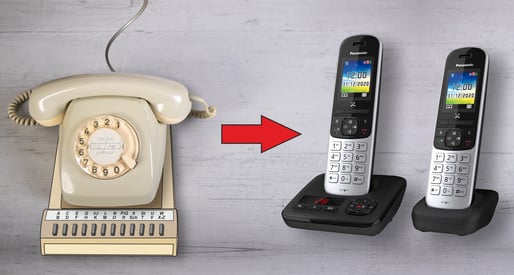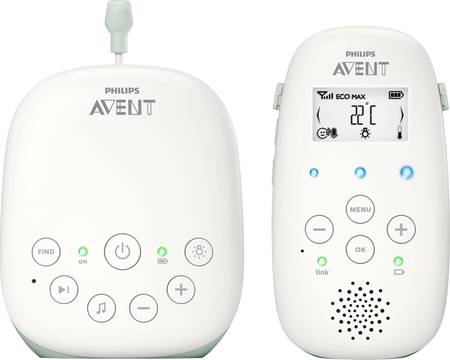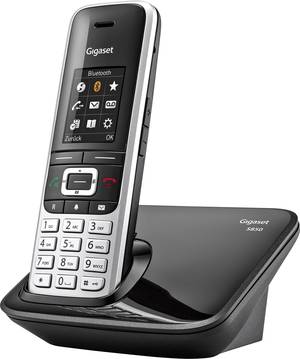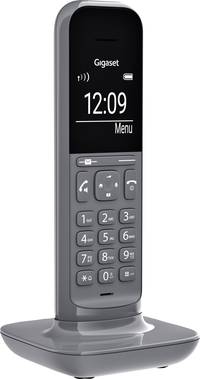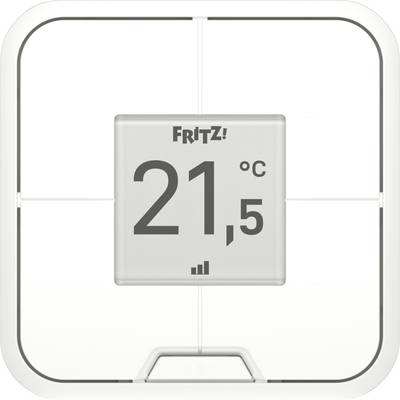DECT telephony » Functionality and technology of the cordless landline telephone
This text is machine translated.
Younger readers have not lived to see it. But there was a time when a telephone had a rotating dial with holes and was permanently connected to the telephone socket by cable. The telephones usually stood on desks in offices or, impractically, in the hallway at home. Sometimes even a lavishly embroidered cover was used to protect the valuable communication tool from dust and dirt. The telephone usually stood on a small box with pushbuttons labeled with letters. At the touch of a button, the index card with the telephone number of the desired caller could be viewed. The digits of the telephone number were then dialed one after the other using the perforated disk. What was state of the art back then is pure nostalgia today.
This is because the telephones are now cordless and therefore no longer tied to one location in the building. Only the base station still has a direct cable connection to the telephone network. The dial has become a keypad and the telephone register is conveniently stored in the handset. But there have also been useful innovations in the wireless connection between the handset and base station.
After all, this is not just a simple and interference-prone radio voice connection. No, the latest DECT technology provides the necessary functionality and protection against eavesdropping. We will be happy to explain to you what the DECT standard is all about and how the technology behind this type of telephony works.
DECT is the abbreviation for Digital Enhanced Cordless Telecommunication and means digitally enhanced cordless communication. DECT was introduced in 1993 and describes the standard with which a cordless telephone (portable part) communicates with the base station in its wireless network. In principle, it can be said that the DECT standard is to cordless telephones what WLAN is to the Internet!
To avoid radio interference, cordless telephones operate in a frequency range of around 1.9 gigahertz (GHz), which is below the WLAN range of 2.4 GHz. The transmission power of a standard DECT phone is max. 250 mW and is high enough to provide good coverage in several rooms within buildings or in large companies. Outdoors, the distance between handset and base station can even be bridged by several hundred meters.
The great advantage of DECT is the digital coding, which means that several handsets can be registered to one DECT base station. As with a telephone system, internal calls are also possible in addition to external connections. However, the interference-free transmission and high sound quality of DECT is not only used for telephones. Some DECT devices such as baby monitors, routers and smart home systems also work with this technology.
In contrast to a cell phone, which works nationwide, a cordless phone must always be within range of its DECT base station. By using several base stations, even larger areas, such as entire company premises, can be completely covered. The call handover from the radio cell of one base station to the next base station is not noticed when making a call.
DECT repeaters are often used instead of additional base stations to increase the range of a base station. In contrast, several handsets can also be registered to a DECT base station without any problems. In all cases, the base station always acts as a connection point between the cordless handset and the telephone connection or the Internet connection.
Structure of data transmission
In most European countries, DECT radio transmission takes place in the frequency range between 1880 MHz and 1900 MHz. In this frequency range, 10 frequency channels are available with a channel spacing of 1728 kHz. This creates a narrow guard band at the upper and lower limits of the frequency range, which is not used for data transmission. Dynamic channel selection or channel assignment means that the channel that currently provides the best transmission quality is always used.
The TDD (Time Division Duplex) method is used for bidirectional data transmission on the 10 channels.
The data to be sent and received is inserted in a precisely defined hyperframe. A hyperframe contains 25 multiframes, whereby each multiframe contains 16 frames, each with 24 timeslots. Twelve timeslots are provided for the downlink, i.e. for data transmission from the base station to the handset, and twelve timeslots are provided in the opposite direction for the uplink. The frame duration is 10 milliseconds (ms).
An RF burst of 368 µs is inserted within the 417 µs time slot. In principle, the RF burst is a high-frequency alternating voltage onto which the information to be transmitted is modulated using Gaussian frequency shift keying (GFSK). In addition to the previously digitized call information, this burst also contains the data required for synchronization and information on the channel quality.
In order to meet all the requirements of a DECT connection, the management of the time slots is variable. For example, the ratio of time slots can be changed from 12:12 to a maximum of 23:1 if larger amounts of data need to be transmitted. Or the time slots can be halved to increase the number of channels (half slot burst). In this case, the burst of 368 µs plus a guard gap of 49 µs is replaced by two HF bursts of 160 µs each.
Communication process
The communication process is not controlled centrally. This means that although DECT handsets do not send out any signals in idle mode (standby mode), they are not inactive. The handsets constantly check the utilization of the available channels and create a list that is always kept up to date.
The DECT base station, on the other hand, continuously emits a beacon signal which, in addition to the identity of the base station, also contains information on current channel usage. This “beacon” signal is also used to synchronize the registered handsets that are within radio range. The beacon signal is transmitted both during telephone pauses, i.e. when no one is on the phone, and during communication. When an external or internal call is received, the base station transmits a paging signal. The desired handset recognizes the signal and will establish a call connection with the base station, just as with an outgoing call.
- The handset searches for the channel with the least interference and sends a call request (outgoing call request) to the base station. This already indicates how many channels are required. In the case of a telephone call, one channel is sufficient.
- The base station receives the call request as it continuously checks the free channels for call requests from the handsets.
- When the call request is confirmed (outgoing call confirmation), the base station transmits a list of the most suitable channels to the handset. The pilot connection established in this way is already sufficient for making calls.
- If required, the handset requests further undisturbed channels (Physical Channel Request), which must be confirmed by the base station (Physical Channel Confimation).
This shows that channel management is not centralized but decentralized and is always dynamic. Each handset decides for itself which channels and time slots to use. It is actively supported in this by the base station. Both the base station and the handset always keep up-to-date lists of the least disturbed channels. If a connection deteriorates, the system automatically switches to a less disturbed channel. This switchover (intercell handover) is not noticed by the person making the call, as parallel operation takes place on two channels for a short time before the original radio channel is abandoned.
Even if the technical description of the DECT function seems very complex and complicated at first, the technology of constantly changing channels offers decisive advantages:
- Own frequency range
- High interception security
- Simultaneous use of several handsets
- Handsets can be used on several base stations
- Automatic switching for multiple base stations
- Long range up to 300 m (outside buildings)
- Very energy-saving
- Good voice quality
- Devices from different manufacturers can be combined
- Wide range of functions
Of course, nobody wants their telephone conversations to be intercepted by unauthorized persons. However, almost any wireless connection can be intercepted. During the development of the DECT standard, various methods were used to prevent a DECT phone from being tapped.
1. the mobile subscriber must be logged on to the base station
2. the handset must identify itself to the base station with a secret key each time a connection is established.
However, as it turned out, these measures were not enough. In 2009, technicians at TU Darmstadt, among others, revealed how DECT calls can be intercepted if necessary. Manufacturers therefore switched to 64-bit encryption. Since 2016, 128-bit or even higher encryption has also been used. Unfortunately, the specific information on encryption is not readily apparent to the end user. In addition, encryption can be deactivated when using DECT repeaters to increase range. Especially if a repeater from another manufacturer's brand is used.
The general access profile GAP (Generic Access Profile) enables a handset from manufacturer A to work on the base station or router from manufacturer B. Compatibility problems, as they used to occur, are now a thing of the past.
This makes it possible for the handset and base station to be selected to suit the individual needs of the user.
However, the GAP standard only relates to the basic telephone functions and not to the convenience functions. It is therefore quite possible that a standard handset from a third-party manufacturer does not offer all the functions of the original handset. The registration process on the DECT base station also varies from manufacturer to manufacturer. This is why difficulties can also occur here under certain circumstances.
Originally, DECT was designed for voice transmission and not for transmitting large amounts of data.
However, as more and more telephone providers are converting their existing telephone networks to the Voice over Internet Protocol (VoIP), DECT also had to be adapted to the advanced and future-oriented connection.
With the DECT CAT-iq standard (Cordless Advanced Technology - internet and quality), internet features such as music streaming or comprehensive information services can be integrated in addition to voice transmission in hi-fi quality. CAT-iq makes DECT virtually IP-capable.
However, DECT CAT-iq has not yet penetrated consumer awareness across the board.
Unfortunately, the term ECO-DECT is not uniformly defined. Manufacturers therefore use this feature when one or more of the functions listed below are available on a DECT cordless telephone:
- Situation-dependent regulation of the transmission power
- Establishment of a radio connection only when required
- Energy-saving power supply units with very high efficiency
- Special functions to reduce transmission power/power consumption
The radiation-free operation of a base station in stand-by mode is a great thing. However, there is one important point to bear in mind. There is a risk of people moving too far away from the DECT base station with the handset. They can then no longer be reached by phone when they are out of range.
DECT technology, which was developed for cordless telephones, is also ideal for smart home applications.
Thanks to its own frequency band, interference and overloads are rare and the security problem has been effectively solved by encryption. The radio range is also ideal for smart homes. DECT-ULE combines these good properties with extremely low power consumption (ultra-low energy).
Despite full transmission power, the power consumption is only in the micro-ampere range. This makes this technology particularly interesting for battery-operated smart home components. Unfortunately, DECT-ULE did not work across manufacturers right from the start. Only with the HAN-FUN (Home Area Network FUNctional protocol) extension should the compatibility problems with DECT-ULE/HUN-FUN be resolved.
Just like routers with WLAN and other wireless systems, a cordless DECT phone also emits a certain amount of radiated power. The radiation power permitted by the Federal Network Agency for a DECT phone is 250 milliwatts (mW). This means that cordless phones from various manufacturers can cover ranges of up to 50 m indoors and around 300 m outdoors. Thanks to the time slot method, a DECT phone only uses one time slot at a time during a call, which reduces the average radiated power to around 10 mW. If several cordless handsets of the DECT telephone are used at the same time, the radiated power increases accordingly.
When no calls are being made, i.e. in stand-by mode, the cordless handsets do not emit any radiated power. This significantly extends the standby time of the DECT devices and ensures a long battery life. Only the base station of the DECT landline telephone emits the beacon signal at regular intervals with time-shortened pulses. The resulting average radiated power is around 2.5 mW.
The specific absorption rate (SAR) describes how much radiation power the human body tissue absorbs from a high-frequency field. When operating a conventional cordless DECT telephone, a SAR value of 0.1 W/kg was determined when a standard handset was placed against the ear. This is well below the maximum value of 2 W/kg (averaged over body areas such as the head and torso) recommended by the German Commission on Radiological Protection (SSK) and the International Commission on Non-Ionizing Radiation Protection (ICNIRP). Irrespective of this, manufacturers are still working on technologies such as ECO mode, which keeps DECT radiation in cordless telephony or cordless DECT telephones as low as possible.
